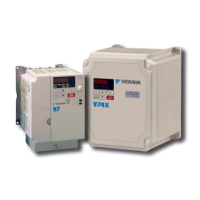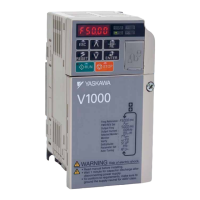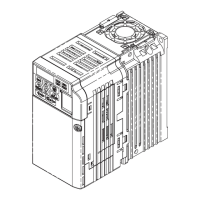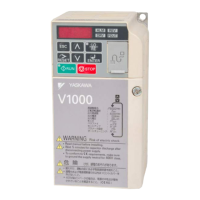5.11 U: Monitor Parameters
Monitor parameters let the user view various aspects of drive performance as it is shown on the operator display.
Some monitors can be output from terminal AM by assigning the specific monitor parameter number to H4-01. Refer to
H4-01: Multi-Function Analog Terminal AM Monitor Selection on page 200 for details on assigning functions to the
analog output.
u
U1: Operation Status Monitors
Status monitors display drive status like output frequency, current etc. Refer to U1: Operation Status Monitors on page
371 for a complete list of U1-oo monitors and descriptions.
u
U2: Fault Trace
These monitor parameters are used to view the status of various drive aspects when a fault occurs. This information is
helpful
for finding out why a fault occurred.
Refer to U2: Fault Trace on page 373 for a complete list of U2-oo monitors
and descriptions.
U2-oo monitors are not reset when the drive is initialized. Refer to o4-11: U2, U3 Initialization on page 239 for
instructions to initialize the fault trace.
u
U3: Fault History
These parameters display faults that have occurred during
operation as well as the drive operation time when those faults
occurred. Refer to U3: Fault History on page 374 for a complete list of U3-oo monitors and descriptions.
U3-oo monitors are not reset when the drive is initialized. Refer to o4-11: U2, U3 Initialization on page 239 for
instructions to initialize the fault trace.
u
U4: Maintenance Monitors
Maintenance monitors show:
• Runtime data of the drive and cooling fans, and number of Run commands issued.
• Maintenance data and replacement information for various drive components.
• kWh data.
• Highest peak current that has occurred and output frequency at the time the peak current occurred.
• Motor overload status information.
• Detailed information about the present Run command and frequency reference source selection.
Refer to U4: Maintenance Monitors on page 374 for a complete list of U4-oo
monitors and descriptions.
u
U5: PID Monitors
These monitors display various aspects of PID control. Refer to PID Block Diagram on page 133 for a description of
where each monitor is located in the PID control block.
Refer to U5: PID Monitors on page 376 for a complete list of U5-oo monitors and descriptions.
u
U6: Control Monitors
Control monitors show:
• Reference data for the output voltage and vector control.
• ASR monitors. Refer to C5: Automatic Speed Regulator (ASR) on page 148 for details and an illustration that shows
where in the ASR block the monitors are located.
• The offset
value added to the frequency reference by the Frequency Offset function. Refer to Setting 44/45/46: Offset
Frequency 1/2/3 Addition on page 183.
• The bias value added to the frequency reference by the Up/Down 2 function. Refer to Setting 75/76: Up/Down 2 on
page 184.
Refer to U6: Control Monitors on page 376 for a complete list of U6-oo monitors and descriptions.
Note: Fix monitors U6-80 to U6-99 for communication options. Monitor content will vary based on the communication option card connected
to the drive. Refer to the option manual for more information.
u
U8: DriveWorksEZ Monitors
These monitors are reserved for use with DriveWorksEZ.
5.11 U: Monitor Parameters
YASKAWA ELECTRIC SIEP C710606 16C YASKAWA AC Drive – V1000 Technical Manual
241
5
Parameter Details
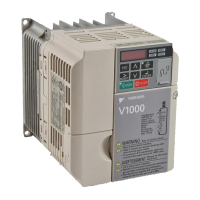
